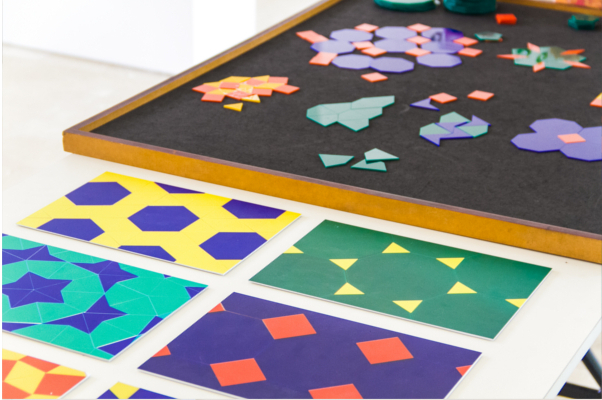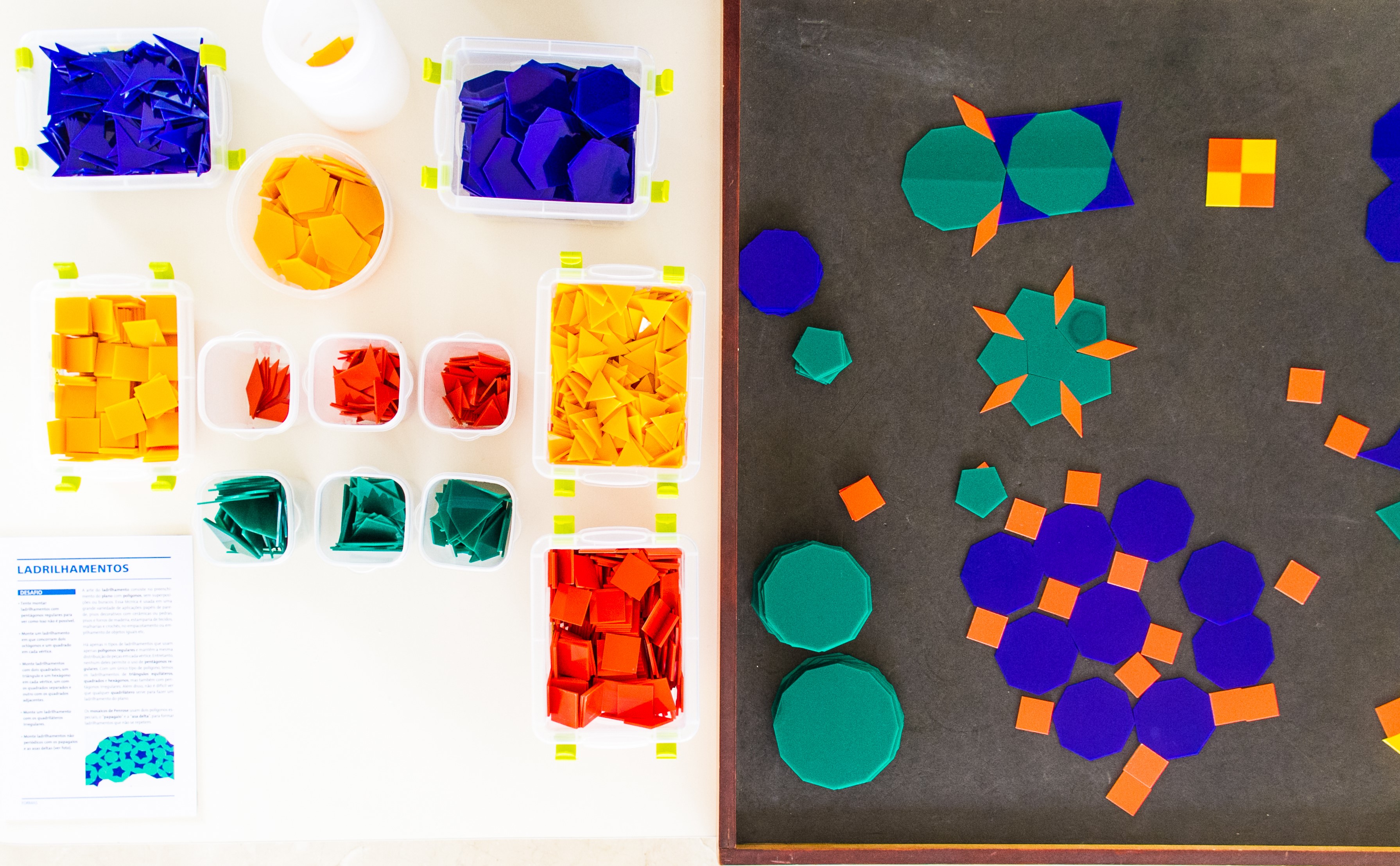MATHEMATICAL TILING
The art of mathematical tiling consists of filling the plane with polygons, without overlaps or holes. This technique is used in a wide variety of applications: wallpaper, decorative floors with ceramics or stones, wooden floors and ceilings, fabric printing, knitting and crochet, in the packaging or stacking of similar objects, etc.


There are only 11 types of mathematical tiling that use only regular polygons and keep the same distribution of tiles at each vertex. However, none of them allow the use of regular pentagons. With a single type of polygon, we have the tiling of equilateral triangles, squares and hexagons, but also with irregular pentagons. Furthermore, it is not difficult to see that any quadrilateral is used to tile the plane.
Penrose mosaics use two special polygons, the “parrot” and the “glider”, to form non-repeating tiles.

